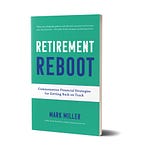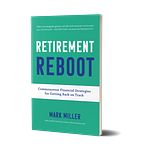My guest on the podcast this week is Kerry Hannon, an expert on the future of work and careers. Kerry is a columnist for Yahoo! Finance - and the author of an excellent and timely new book that considers ways that older workers can succeed in the pandemic labor market. It’s called In Control At 50 - How to Succeed in the New World of Work.
If you are struggling to determine your late-career moves in the pandemic labor market, Kerry’s book is for you. In this conversation, we focused on the five key themes of In Control at 50+:
Remote work is no longer a perk
Contract positions are swelling
Midlife entrepreneurship is increasingly viable
Older workers are making “dream” career changes
Lifelong learning remains valuable
Click the player icon at the top of the newsletter to listen to my conversation with Kerry Hannon.
The financial health of Medicare and Social Security: A closer look
Forecasting the financial health of Social Security and Medicare brings to mind that old saying: “It’s tough to make predictions, especially about the future.”
The quip usually is attributed to baseball legend Yogi Berra, although it actually seems to originate with a Danish politician circa 1948. No matter the source, it’s a suitable comment when considering forecasts about our two most important retirement programs.
Two years ago, plenty of pundits were warning that the pandemic-induced economic plunge would blow huge holes in these critical social insurance programs. But reports issued this month by the Medicare and Social Security trustees show that the strong economic rebound last year contributed to slight improvements in their health.
More people were working and paying Federal Insurance Contributions Act, (FICA) taxes last year. As a result, Social Security’s trustees forecast that the combined retirement and disability trust funds will be depleted in 2035—one year later than last year’s forecast. The Medicare trustees report that the Hospital Insurance trust fund will be emptied in 2028—two years later than forecast last year.
Still, both of those dates are too close for comfort—and long-term problems loom for both trust funds.













